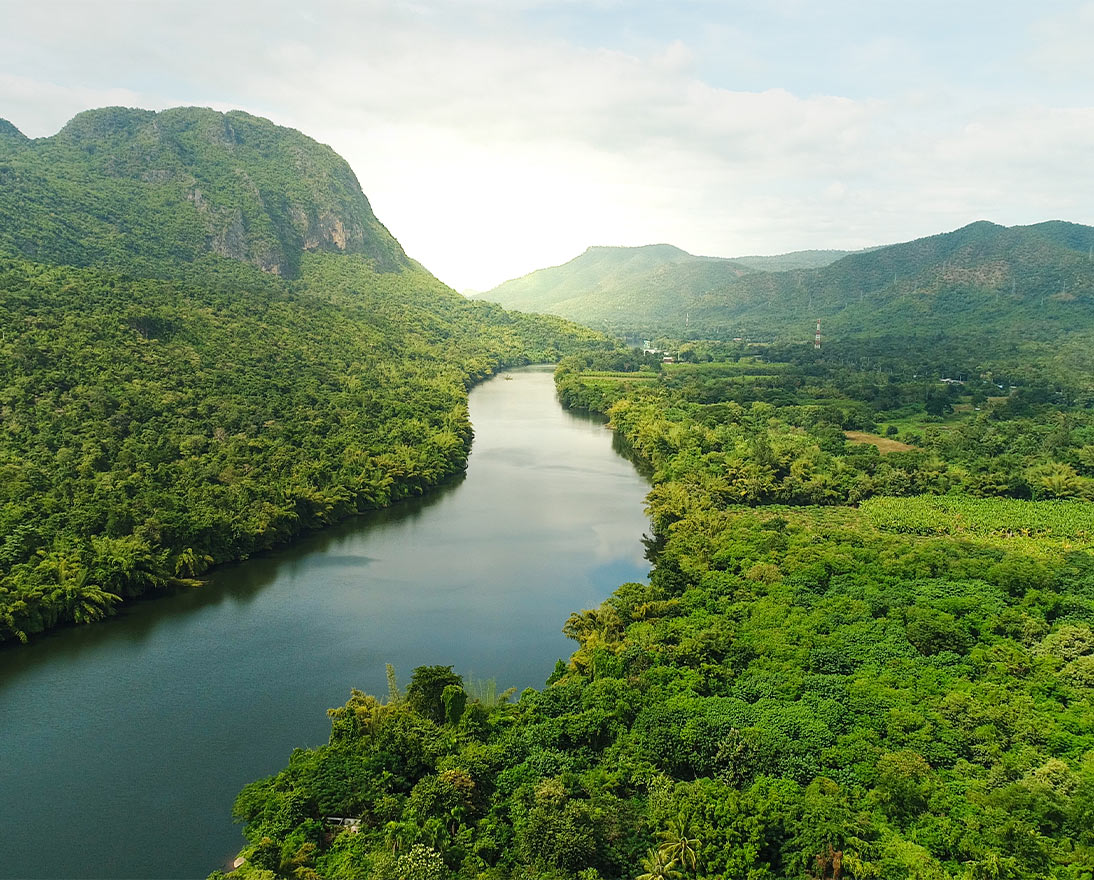Why are we so bad at long-term thinking?
RiskArticleFebruary 7, 2023
“Risk” used to mean watching for predators or running out of food in the winter. Now our brains are dealing with complex modern threats from climate change to the cost-of-living crisis. Can we escape the ancient trap of short-term thinking?
What’s riskier: a lion that’s about to pounce on you, or an iceberg melting away in the distance?
Both pose a threat to human life. But our ability to perceive and act on the long-term danger falters in comparison to our readiness to grab a spear or rock to deter the big cat.
Our ability to focus on our immediate surroundings was once a handy mechanism to stay alive. Now, this short-term bias could be putting the world at risk. While we’re well aware of the challenges ahead, acting on them is a different story. The urgency of the COVID-19 pandemic prompted dramatic changes, from lockdowns to virtual working; the slow-burn crisis of climate change has not had the same effect.
The 2023 edition of the Global Risks Report (GRR), which explores the various interconnected threats facing our world, unsurprisingly flags climate change as a major long-term risk that we’re failing to address adequately.
Is our failure to act on the long-term really our fault? Or can we blame evolution?
A 30,000-year-old lag in thinking
According to scientists, our brain hasn’t changed much over the past 30,000 years. Yet within that time frame, we’ve gone from being hunter-gatherers to creating factories, algorithms and cities supporting millions of people.
In other words, our minds were built for survivalist decision-making – not mortgages and climate change. As the neuroscientist Daniel J. Levitin puts it: “Our brains evolved to focus on one thing at a time.”
Modern life has taken this short-term weakness and exploited it. Social media likes and comments give us an instant hit, sugary foods prey on our instinct for food security and online shopping means we don’t have to wait for what we want – it’ll be delivered tomorrow.
Governments and business leaders face these same issues but on a much bigger scale. A leader 10,000 years ago could not have impacted millions with a single decision.
Because our brains cannot evolve along with our environment, the question remains: can we effectively think and plan for the long-term?
Why is long-term thinking important?
Long-term thinking is the practice of intentionally considering what may happen in the future. It requires vision, and it involves questioning the consequences that choices and decisions made today will have on the future. If done well, then long-term thinking can help us build a better future.
But there’s a constant battle between the problems we face today, and that ever-melting iceberg in the distance.
Russia’s invasion of Ukraine set off what the International Energy Agency has called “the first truly global energy crisis.” As a result, the GRR sees global leaders increasingly confronted by trade-offs between energy security, affordability and sustainability. Coal use hit a new peak in 2022, even as world leaders generally agreed on the urgency of tackling the existential threat of climate change.
The short-term nature of politics exacerbates these challenges. Most democracies have scheduled elections every 4-6 years, forcing politicians to prioritize policies that will have a positive impact quickly, even if they store up problems for the future.
The GRR warns that social and political division can “incentivize the adoption of short-term, more extreme policy platforms, to galvanize one ‘side’ of the population and perpetuate populist beliefs.”
On the other side of the coin, sometimes efforts to safeguard the future can backfire on the present. One example of this is debt-for-nature swaps. In these ‘swaps,’ a portion of a developing nation’s debt is forgiven in exchange for local investments into conservation. By protecting ecosystems that act as natural carbon sinks, they are seen as a tool to fight climate change.
However, the GRR notes that they can also contribute to short-term challenges of food insecurity and a rising cost of living, as there is less land available for agriculture.
Why short-term thinking can be bad?
If politics leans towards short-termism, this is even more true of the business world.
In 1950, a typical share of stock in the U.S. public markets was held for eight years. Since 2006, that number has dropped to less than a year, largely due to technology-enabled trading and hedge funds looking for short term profits. The ownership of privately held companies in U.S. has shifted in this direction too, with less long-term operators like family-owned businesses.
Some business leaders have attempted a backlash. Back in 2018, American business magnate Warren Buffet and the CEO of the bank JPMorgan Chase, Jamie Dimon, called for public companies to stop issuing quarterly earnings guidance. Their rationale: “Quarterly earnings guidance often leads to an unhealthy focus on short-term profits at the expense of long-term strategy, growth and sustainability.” While their words didn’t have an immediate impact, COVID-19 did: many companies pulled their usual forecasting and instead shared their assessment of the situation and the state of the business over predicting future cash flow.
However, the GRR sees short-termism play out in another worrying economic trend: self-sufficiency and protectionism. The impact of the pandemic, the conflict in Ukraine and resulting supply chain issues have encouraged governments and companies to become more self-sufficient, for example by tightening restrictions around working with foreign companies. But this approach could backfire in the long-term, as the report warns:
“This may spur contrary outcomes to the intended objective, driving resilience and possibility productivity lower, and marking the end of an economic era characterized by cheaper and globalized capital, labor, commodities, and goods.”
In other words, an instinct towards protecting the short-term could slide into a longer-term economic malaise that will be damaging to all.
Self-awareness is our lifeline
We may be wired for the short-term, but the good news is that we’re a self-aware species capable of course-correcting.
As COP27 made clear, while the pace of progress is too slow, we’re seeing some much-needed efforts to address climate change. Decades of conversations resulted in the creation of the Loss and Damage Fund, as well as more funding for The Adaptation Fund that supports climate-vulnerable countries. The UN announced a further USD 3.1 billion investment into climate disaster warning systems.
While technology may play on our short-term vices, it’s also being used to protect our future. A notable example is The Seed Bank, which holds over 2.4 billion seeds in flood, bomb and radiation-proof vaults. With two in five plant species at risk of extinction, The Seed Bank is reassurance that we can germinate and reintroduce plants in case the worst happens.
One thing is clear: being aware of what risks lie ahead is the first step in addressing them. The GRR gives us a look into the future, a perspective our ancient brains desperately need.



